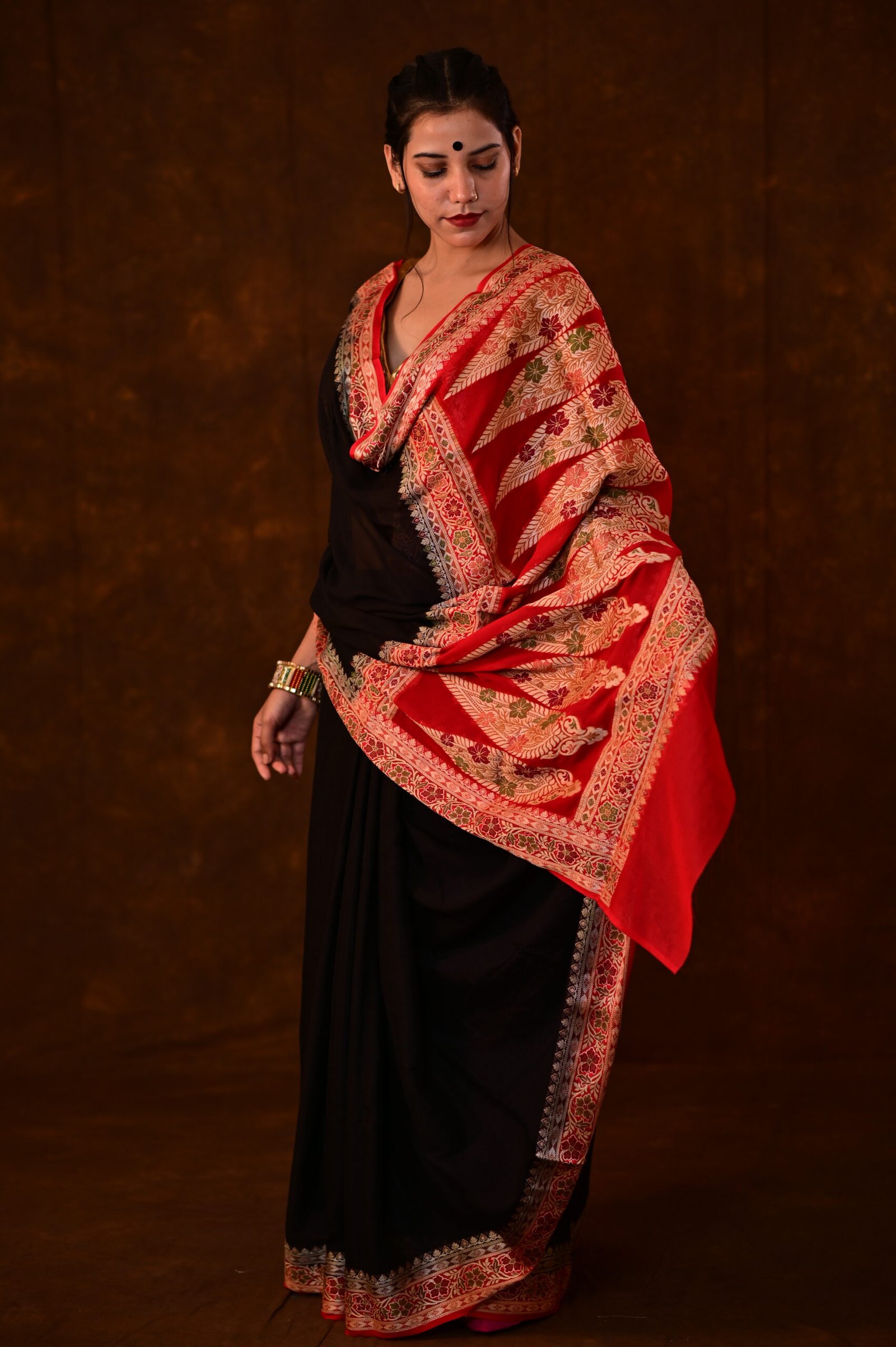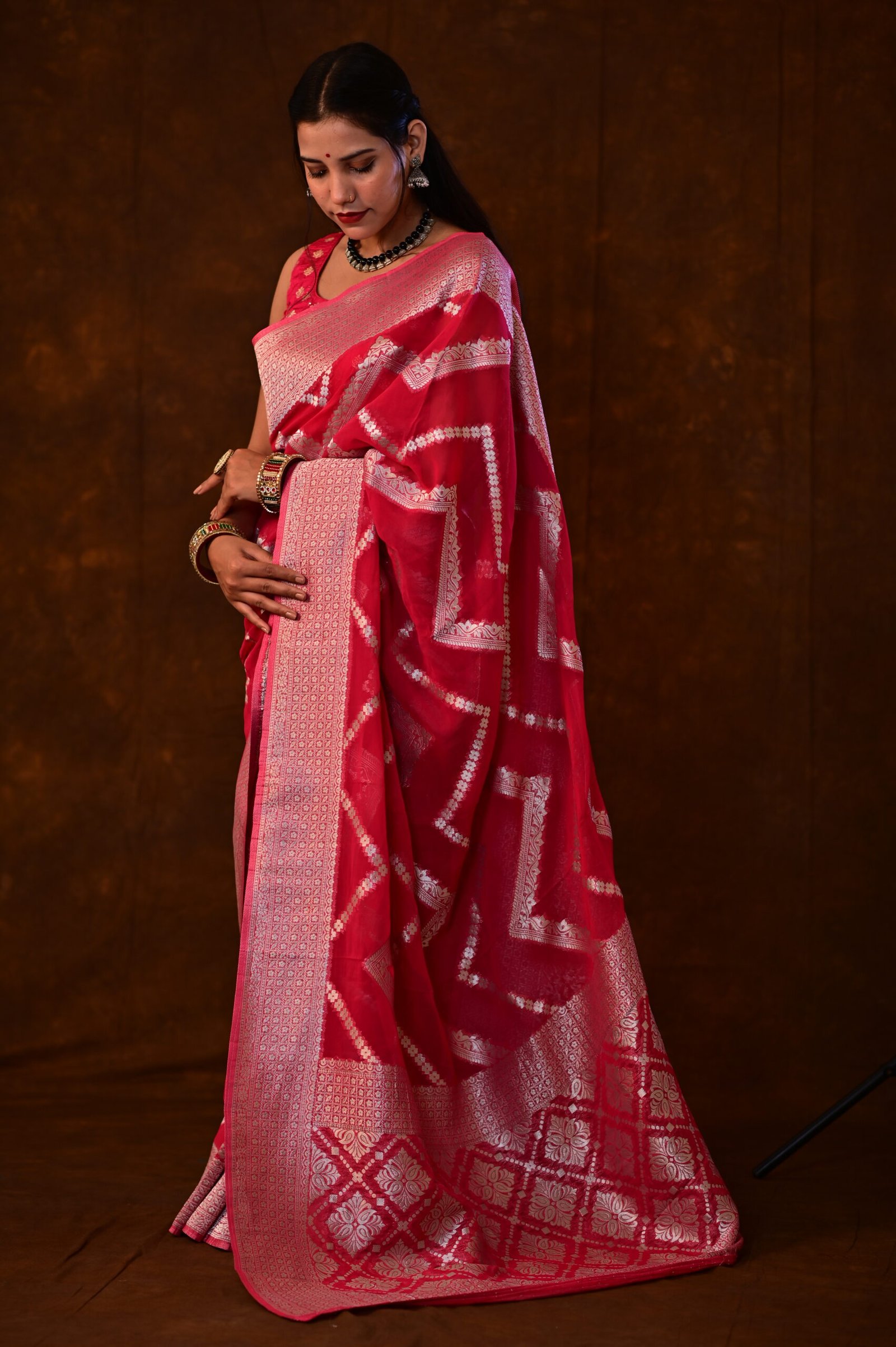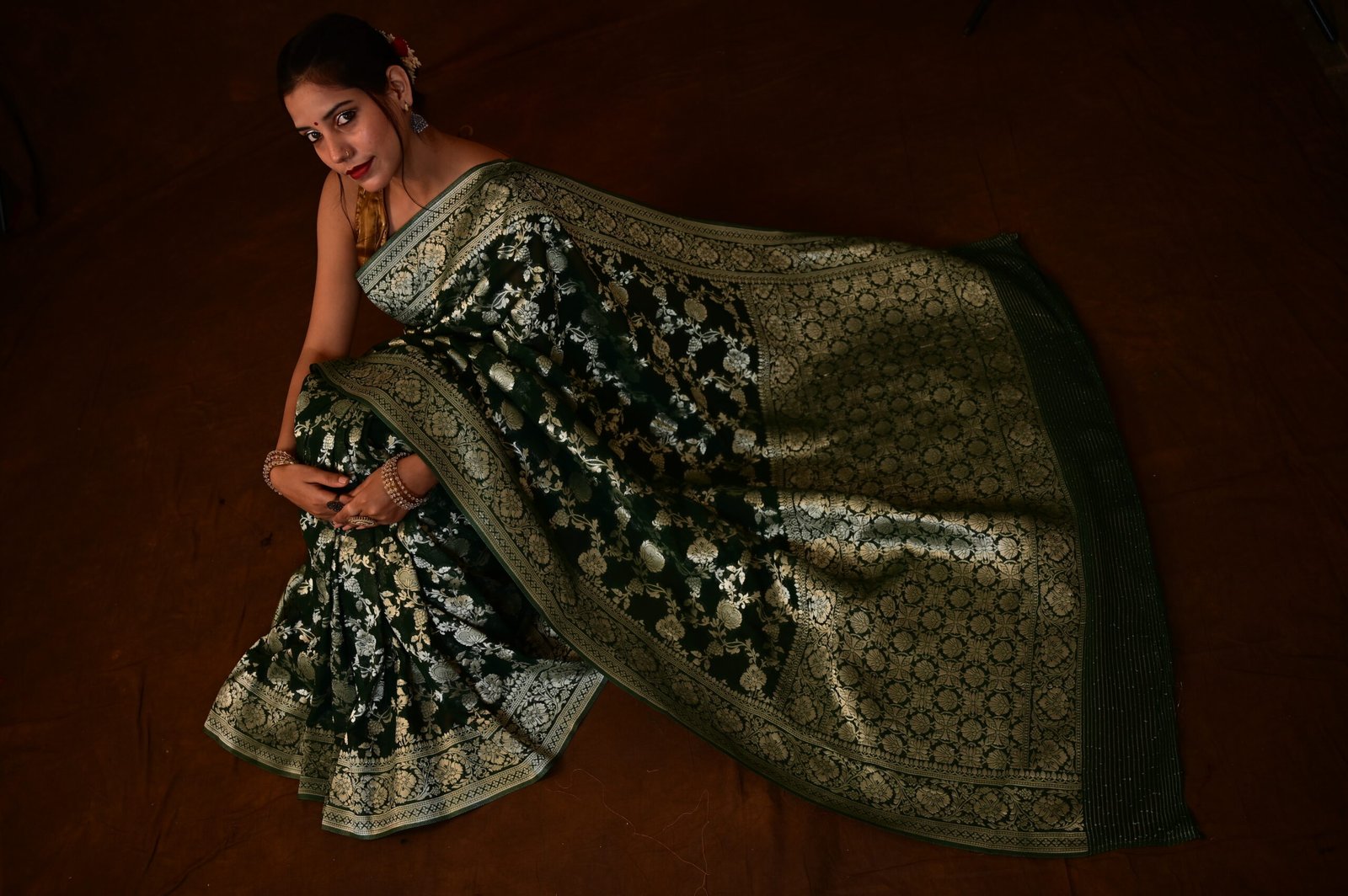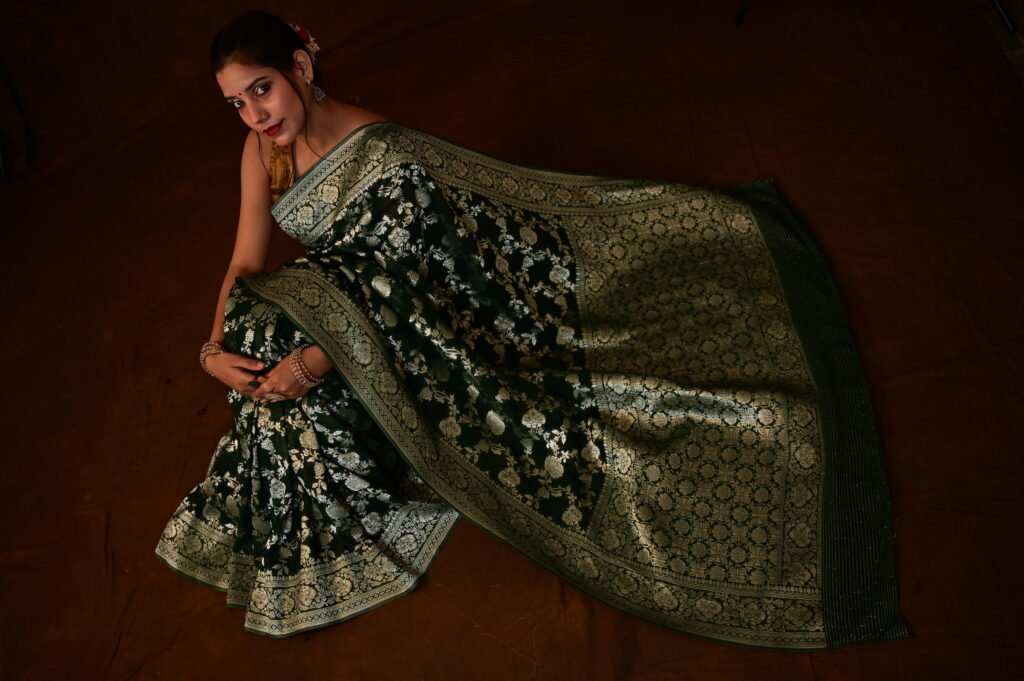India is known for its rich cultural heritage, and one of the most iconic symbols of this heritage is the saree. With its origins tracing back thousands of years, the saree is not just a piece of clothing but a piece of art that embodies the essence of Indian tradition. This guide delves into the world of saree manufacturing in India, focusing on various types, key manufacturers, and the intricate processes involved. This comprehensive article will use the specified keywords in a detailed manner, ensuring a thorough understanding for readers.
History of Saree Manufacturing in India

Sarees have been a staple in Indian clothing for centuries. The earliest evidence of saree-like garments dates back to the Indus Valley Civilization. Over time, the saree evolved, influenced by various dynasties, cultures, and regions. Each region in India has its unique style of saree, characterized by distinct fabrics, weaves, and designs.
Major Saree Manufacturing Regions in India
- Varanasi: Known for the exquisite Banarasi sarees, Varanasi is one of the oldest and most prominent centers for saree manufacturing in India. The city is famous for its silk sarees adorned with intricate gold and silver brocade designs.
- South India: States like Tamil Nadu, Karnataka, and Andhra Pradesh are renowned for their silk sarees. The Kanchipuram saree from Tamil Nadu and Mysore silk sarees from Karnataka are particularly famous.
- West Bengal: Known for its handloom sarees like the Tant, Baluchari, and Jamdani, West Bengal is a significant player in the saree manufacturing industry.
- Madhya Pradesh: Chanderi sarees, known for their lightweight and glossy texture, are a specialty of Madhya Pradesh.
Types of Sarees and Their Manufacturers

- Banarasi Sarees Manufacturer in Varanasi, India
- Banarasi sarees are synonymous with luxury and opulence. Made from finely woven silk, these sarees are known for their intricate patterns and Mughal-inspired designs. Varanasi houses numerous manufacturers specializing in Banarasi sarees, with artisans dedicating their lives to perfecting this craft.
- Cotton Saree Manufacturers in India
- Cotton sarees are a staple for everyday wear, especially in the hotter regions of India. These sarees are known for their comfort and breathability. Key regions for cotton saree manufacturing include West Bengal (Tant sarees), Andhra Pradesh (Mangalagiri cotton sarees), and Tamil Nadu (Chettinad cotton sarees).
- Silk Saree Manufacturers in India
- Silk sarees are a hallmark of elegance and tradition. Major manufacturers are spread across South India, with Tamil Nadu (Kanchipuram), Karnataka (Mysore), and Andhra Pradesh (Pochampally) being the key players. These regions produce high-quality silk sarees that are sought after worldwide.
- Fancy Saree Manufacturers in India
- Fancy sarees cater to contemporary fashion trends. These sarees are often adorned with sequins, embroidery, and modern prints. Surat in Gujarat is a major hub for fancy saree manufacturing, producing vibrant and trendy designs that appeal to a younger demographic.
- Chanderi Sarees Manufacturer in India
- Chanderi sarees, originating from Madhya Pradesh, are known for their sheer texture and lightweight fabric. These sarees often feature traditional motifs like coins, peacocks, and floral art, making them a favorite for festive occasions.
- Handloom Sarees Manufacturers in India
- Handloom sarees represent the traditional weaving techniques passed down through generations. West Bengal, Odisha, and Assam are prominent regions for handloom sarees. These sarees are often characterized by their unique weaves and natural fibers.
Best Saree Manufacturer in India

Identifying the best saree manufacturer in India can be subjective as it depends on personal preferences and the type of saree. However, some manufacturers stand out due to their quality, craftsmanship, and reputation. Climax Saree, for instance, is renowned for its diverse range of sarees, from traditional Banarasi to modern fancy sarees.
Biggest Saree Manufacturer in India
The title of the biggest saree manufacturer in India often goes to large-scale producers based in Surat, Gujarat. This region is known for its massive production capabilities, catering to both domestic and international markets. Manufacturers here produce a wide variety of sarees, ensuring there is something for everyone.
Saree Manufacturing Factory in India
A typical saree manufacturing factory in India is a blend of tradition and modernity. While some aspects of saree production remain rooted in traditional handloom techniques, many factories have adopted modern machinery to enhance efficiency and meet growing demand. These factories are usually located in regions known for specific types of sarees, such as Varanasi for Banarasi sarees or Kanchipuram for silk sarees.
Silk Saree Manufacturers in South India

South India is synonymous with silk saree production. Tamil Nadu, Karnataka, and Andhra Pradesh are the key states. Kanchipuram sarees from Tamil Nadu are known for their durability and intricate zari work. Mysore silk sarees from Karnataka are prized for their rich texture and pure silk. Pochampally sarees from Andhra Pradesh are famous for their unique ikat designs.
FAQs
Q: What makes Banarasi sarees unique? A: Banarasi sarees are unique due to their intricate designs, often featuring gold and silver brocade work. The use of fine silk and the detailed patterns inspired by Mughal art make these sarees highly sought after.
Q: How can I identify an authentic silk saree? A: Authentic silk sarees have a soft and smooth texture. You can perform a simple test by burning a small thread from the saree. Pure silk will burn slowly and leave a powdery ash, while synthetic fibers will leave a hard residue.
Q: Where can I buy the best sarees in India? A: Some of the best places to buy sarees in India include Varanasi for Banarasi sarees, Kanchipuram for silk sarees, and West Bengal for handloom sarees. For a wide variety and quality, Climax Saree is a recommended option.
Q: What are the price ranges for different types of sarees? A: The price of sarees varies widely based on the type, fabric, and intricacy of the work. Banarasi sarees can range from INR 5,000 to INR 1,00,000, while cotton sarees are more affordable, ranging from INR 1,000 to INR 10,000. Silk sarees can cost anywhere between INR 2,000 to INR 50,000.
Q: How are handloom sarees different from power loom sarees? A: Handloom sarees are woven manually using traditional techniques, often resulting in unique and intricate designs. Power loom sarees are produced using machinery, allowing for mass production but often lacking the fine details of handloom sarees.
Related Keywords and Their Detailed Descriptions
1. Saree Manufacturers in India
- India boasts a vast number of saree manufacturers, each specializing in different types of sarees. From traditional handloom sarees to modern fancy sarees, these manufacturers cater to a wide range of preferences and occasions.
2. Banarasi Sarees Manufacturer in Varanasi India
- Varanasi is the epicenter of Banarasi saree production. The manufacturers here are known for their expertise in creating exquisite silk sarees with intricate brocade work, often passed down through generations.
3. Cotton Saree Manufacturers in India
- Cotton sarees are produced in various regions, with West Bengal, Andhra Pradesh, and Tamil Nadu being prominent. These manufacturers focus on creating comfortable and breathable sarees, ideal for everyday wear.
4. Best Saree Manufacturer in India
- The best saree manufacturer in India is subjective and varies based on individual preferences. However, some well-regarded manufacturers include Climax Saree, known for their quality and diverse range of sarees.
5. Biggest Saree Manufacturer in India
- Surat in Gujarat is home to some of the biggest saree manufacturers in India. These manufacturers are known for their large-scale production capabilities and a wide variety of sarees, catering to both domestic and international markets.
6. Silk Saree Manufacturers in India
- Silk saree manufacturers are primarily located in South India, with Tamil Nadu, Karnataka, and Andhra Pradesh being key regions. These manufacturers are renowned for their high-quality silk sarees, characterized by rich textures and intricate designs.
7. Fancy Saree Manufacturers in India
- Fancy sarees are produced by manufacturers who focus on contemporary designs and trends. Surat is a major hub for fancy saree production, offering vibrant and trendy designs that appeal to a younger demographic.
8. Saree Manufacturing Factory in India
- Saree manufacturing factories in India blend traditional weaving techniques with modern machinery. These factories are located in regions known for specific types of sarees, ensuring quality and authenticity.
9. Silk Saree Manufacturers in South India
- South India is famous for its silk saree manufacturers, particularly in Tamil Nadu (Kanchipuram), Karnataka (Mysore), and Andhra Pradesh (Pochampally). These manufacturers produce some of the finest silk sarees, known for their durability and intricate designs.
10. Chanderi Sarees Manufacturer in India –
Chanderi sarees are produced in Madhya Pradesh, known for their lightweight and glossy texture. These manufacturers focus on creating sarees with traditional motifs, making them a favorite for festive occasions.
11. Handloom Sarees Manufacturers in India –
Handloom sarees are produced using traditional weaving techniques, resulting in unique and intricate designs. West Bengal, Odisha, and Assam are prominent regions for handloom saree manufacturing.
Conclusion
Saree manufacturing in India is a testament to the country’s rich cultural heritage and skilled craftsmanship. From the luxurious Banarasi sarees of Varanasi to the elegant silk sarees of South India, each region contributes to this vibrant industry. Whether you are looking for traditional handloom sarees or trendy fancy sarees, India’s saree manufacturers offer a diverse range of options. Climax Saree stands out as a prominent player, providing high-quality sarees that cater to various tastes and preferences. By understanding the different types of sarees and their origins, you can make an informed choice and appreciate the artistry involved in creating these timeless garments.






 B.21/212-2K-3, Asfaque Nagar Kamaccha, Varanasi, Uttar Pradesh, India. 221010
B.21/212-2K-3, Asfaque Nagar Kamaccha, Varanasi, Uttar Pradesh, India. 221010